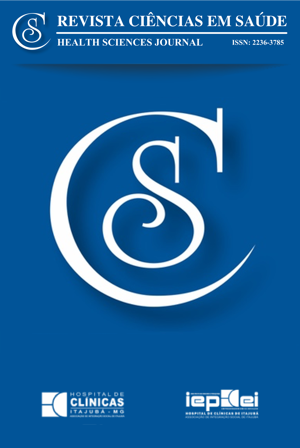Vascular anomalies
Main Article Content
Abstract
Vascular anomalies are complex diseases with different clinical presentations. In ancient times, some purplish spots were already seen as a curse, and over the centuries, they began to be described as part of other diseases, gaining different eponyms. In recent decades, the term "hemangioma" has been missused to describe a large part of vascular anomalies, causing a significant problem in diagnosing and treating patients.
Article Details
Authors maintain copyright and grant the HSJ the right to first publication. From 2024, the publications wiil be licensed under Attribution 4.0 International 
 , allowing their sharing, recognizing the authorship and initial publication in this journal.
, allowing their sharing, recognizing the authorship and initial publication in this journal.
Authors are authorized to assume additional contracts separately for the non-exclusive distribution of the version of the work published in this journal (e.g., publishing in an institutional repository or as a book chapter), with acknowledgment of authorship and initial publication in this journal.
Authors are encouraged to publish and distribute their work online (e.g., in institutional repositories or on their personal page) at any point after the editorial process.
Also, the AUTHOR is informed and consents that the HSJ can incorporate his article into existing or future scientific databases and indexers, under the conditions defined by the latter at all times, which will involve, at least, the possibility that the holders of these databases can perform the following actions on the article.
References
Mulliken JB, Glowacki J. Hemangiomas and vascular malformations in infants and children: a classification based on endothelial characteristics. Plast Reconstr Surg. 1982;69(3):412-22. https://doi.org/10.1097/00006534-198203000-00002
Carqueja IM, Sousa J, Mansilha A. Vascular malformations: classification, diagnosis and treatment. Int Angiol. 2018;37(2):127-42. https://doi.org/10.23736/S0392-9590.18.03961-5
Léauté-Labrèze C, Dumas de la Roque E, Hubiche T, Boralevi F, Thambo JB, Taïeb A. Propranolol for severe hemangiomas of infancy. N Engl J Med. 2008;358(24):2649-51. https://doi.org/10.1056/NEJMc0708819
Gu H, Liu H, Cai R, Chen H, Lin X. Managing vascular anomalies in the era of genetics and precision medicine: an opportunity or a challenge? Ann Plast Surg. 2021;86(3S Suppl 2):S269-72. https://doi.org/10.1097/SAP.0000000000002723
Le Cras TD, Goines J, Lakes N, Pastura P, Hammill AM, Adams DM, et al. Constitutively active PIK3CA mutations are expressed by lymphatic and vascular endothelial cells in capillary lymphatic venous malformation. Angiogenesis. 2020;23(3):425-42. https://doi.org/10.1007/s10456-020-09722-0
Adams DM, Trenor CC 3rd, Hammill AM, Vinks AA, Patel MN, Chaudry G, et al. Efficacy and safety of sirolimus in the treatment of complicated vascular anomalies. Pediatrics. 2016;137(2):e20153257. https://doi.org/10.1542/peds.2015-3257
Freixo C, Ferreira V, Martins J, Almeida R, Caldeira D, Rosa M, et al. Efficacy and safety of sirolimus in the treatment of vascular anomalies: A systematic review. J Vasc Surg. 202071(1):318-27. https://doi.org/10.1016/j.jvs.2019.06.217
Venot Q, Blanc T, Rabia SH, Berteloot L, Ladraa S, Duong JP, et al. Targeted therapy in patients with PIK3CA-related overgrowth syndrome. Nature. 2018;558(7711):540-6. https://doi.org/10.1038/s41586-018-0217-9
Eifert S, Villavicencio JL, Kao TC, Taute BM, Rich NM. Prevalence of deep venous anomalies in congenital vascular malformations of venous predominance. J Vasc Surg. 2000;31(3):462-71. PMID: 10709058
